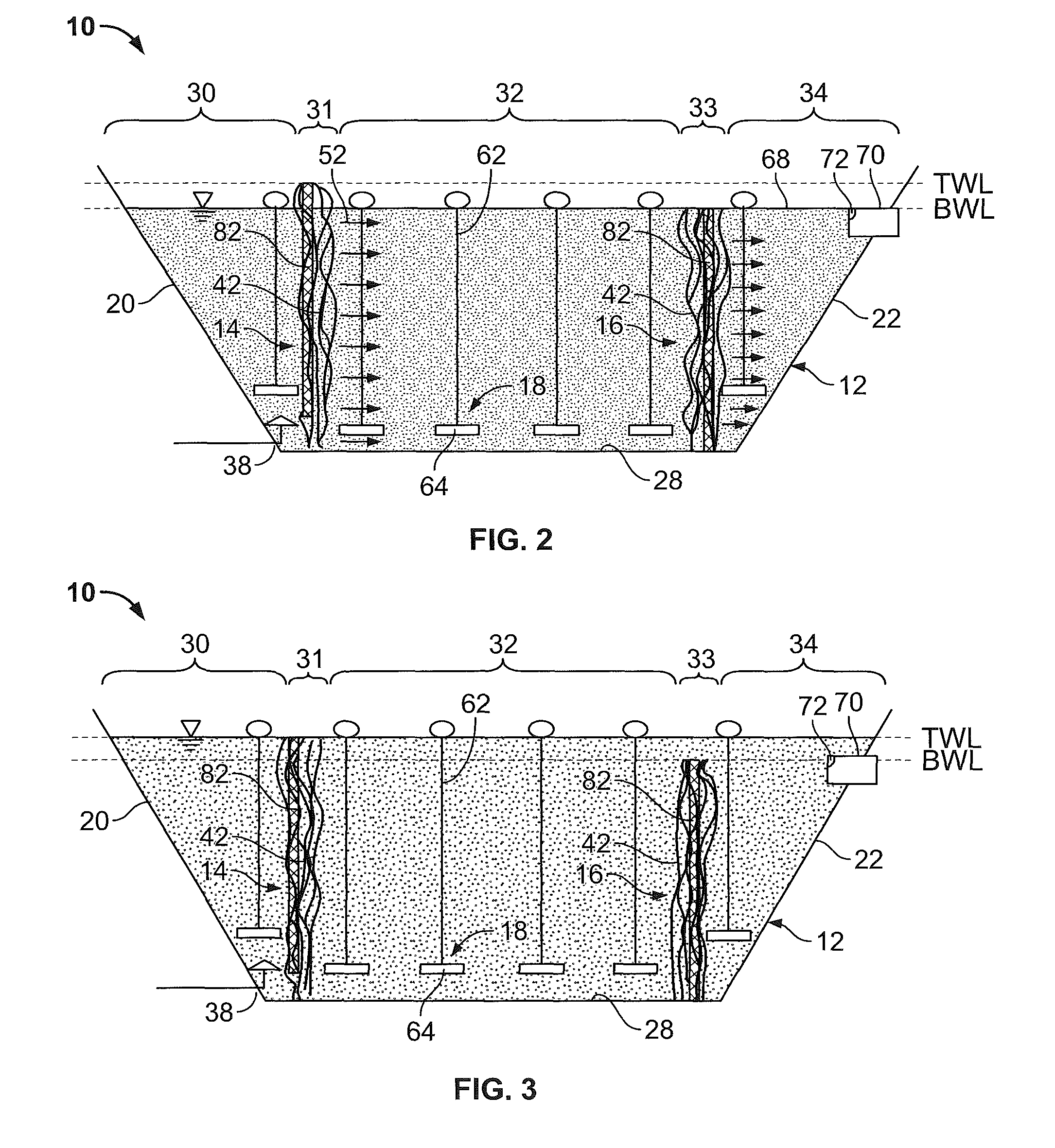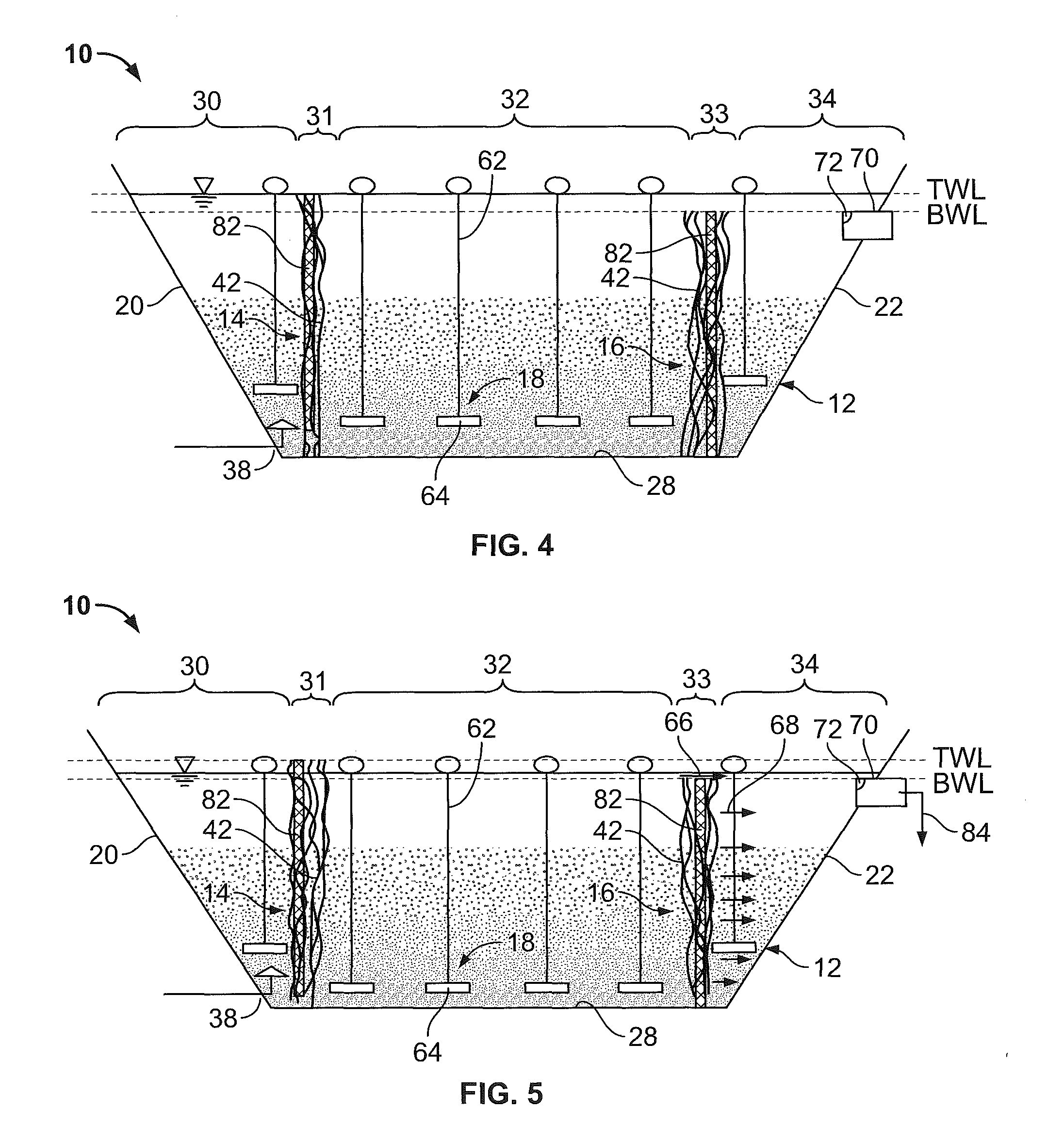Decanted bio-balanced reactor and method
a bio-balanced reactor and decanting technology, applied in biological water/sewage treatment, filtration separation, separation processes, etc., can solve the problems of not treating all the nitrogen contained within the wastewater entering the lagoon, the nitrification rate within the lagoon is so low, and the wastewater biological oxygen demand is reduced, so as to promote the shaking or flexing of the bio media and reduce the effect of biological oxygen demand of the wastewater
- Summary
- Abstract
- Description
- Claims
- Application Information
AI Technical Summary
Benefits of technology
Problems solved by technology
Method used
Image
Examples
Embodiment Construction
[0022]The present invention relates generally to the field of treatment of wastewater, and more particularly to an improved system and method for treating wastewater containing contaminants The system and method can be employed to reduce the solids content, biological oxygen demand (BOD) and nitrogen content of wastewater. It may be implemented in new lagoons, concrete structures or other systems or may be implemented to upgrade existing concrete structures or earthen basin and lagoon type structures in order to bring those systems in conformance with regulations imposed by governmental bodies.
[0023]Referring now to the drawings and initially to FIG. 1, numeral 10 generally designates a wastewater treatment system that includes, among other things, a reactor 12 for containing and treating a liquid such as wastewater, first and second bio media 14 and 16 and an aeration system 18. As will be discussed in greater detail below, the first and second bio media 14 and 16 are adapted and p...
PUM
| Property | Measurement | Unit |
|---|---|---|
| time | aaaaa | aaaaa |
| time | aaaaa | aaaaa |
| height | aaaaa | aaaaa |
Abstract
Description
Claims
Application Information
 Login to View More
Login to View More - R&D
- Intellectual Property
- Life Sciences
- Materials
- Tech Scout
- Unparalleled Data Quality
- Higher Quality Content
- 60% Fewer Hallucinations
Browse by: Latest US Patents, China's latest patents, Technical Efficacy Thesaurus, Application Domain, Technology Topic, Popular Technical Reports.
© 2025 PatSnap. All rights reserved.Legal|Privacy policy|Modern Slavery Act Transparency Statement|Sitemap|About US| Contact US: help@patsnap.com



